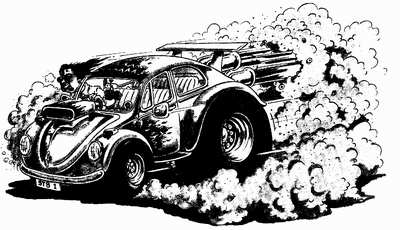What type of transport is silent, non polluting, energy-efficient - and lethal ? Ask any New Yorker and be answered without hesitation : the bicycle. The preferred vehicle of the demure for over a century has become, in the 1980’s, the preferred instrument of aggression for young horizontally mobile, urban professional.
Innocent pedestrians - admittedly a rare breed among New Yorkers - have long known the dangers of stepping off the pavement in Manhattan, even to cross the streets when red lights suggest it is safe to do so. In recent years they have come to realize they also risk being mown down in the supposed safety of the sidewalk : when other paths are blocked, crazed bicyclists, whistling like kettles, think nothing of mounting the pavement and scattering all before them. Some 640 collisions involving cyclists and pedestrians were reported in New York last year : three were fatal.
The offenders are not, for the most part, impoverished commuters or ecologically-minded yuppies who bicycle for exercise. They are messengers delivering packages for dispatch companies. Paid by the delivery rather than the hour, these commercial bicyclists put the profit motive well above traffic regulations.
Efforts to control cyclists have met with little success. A law was passed three years ago that obliged dispatch companies to make their messengers wear identification badges. It was widely disregarded. A tripling of the number of summonses issued last year did reduce the collision count, but by less than 10% (nearly 90% of the summonses were ignored). And a scheme to ban bikes from mid-Manhattan during the middle of the day was stopped by a judge in September, almost as soon as it had started, because it had been enacted without enough notice. Now Mayor Edward Koch wants commercial bicyclists, and the companies that employ them, licensed.
It may help. But the real trouble lies in New York’s current commercial success. With 400,000 new jobs created in the city in the past ten years, more and more people want to move themselves and their packages around. Traffic jams now begin at the Lincoln Tunnel and other river crossings at 7 in the morning, and the rush hours extend ever later in the evenings. Some 3.7 m people travel by subway every weekday - more than at any time since 1974. Half a million people take a cab every day ; more would if they could. And the Hudson River ferry service, which stopped in 1967 after 306 years, has started carrying commuters again.
The 30,000 midtown bicyclists are a natural response to the paralysis that seizes so much of the city. And their anarchic behaviour is unlikely to end until order comes to New York - when the streets will no doubt be full of grass, not cars, bicycles or pedestrians.
The Economist, June 1990
